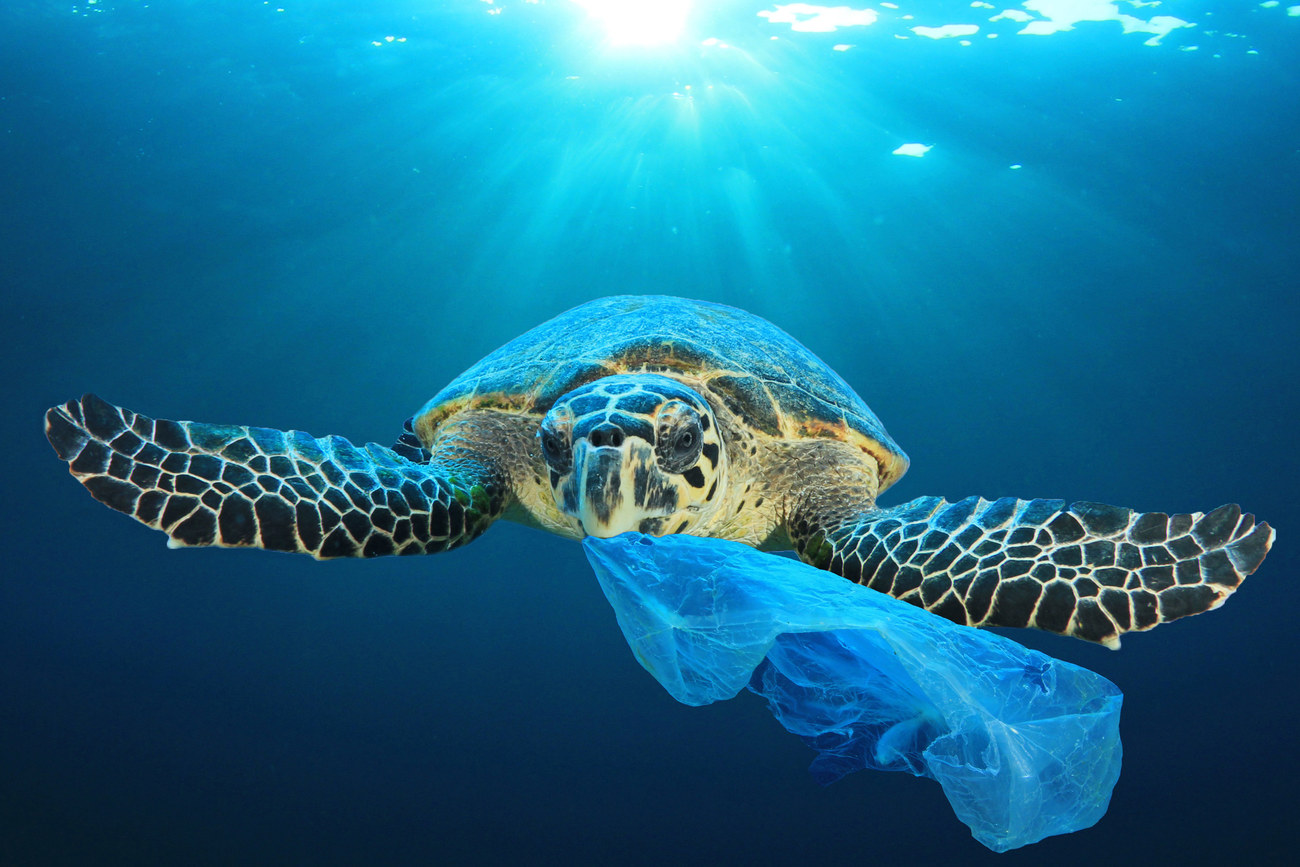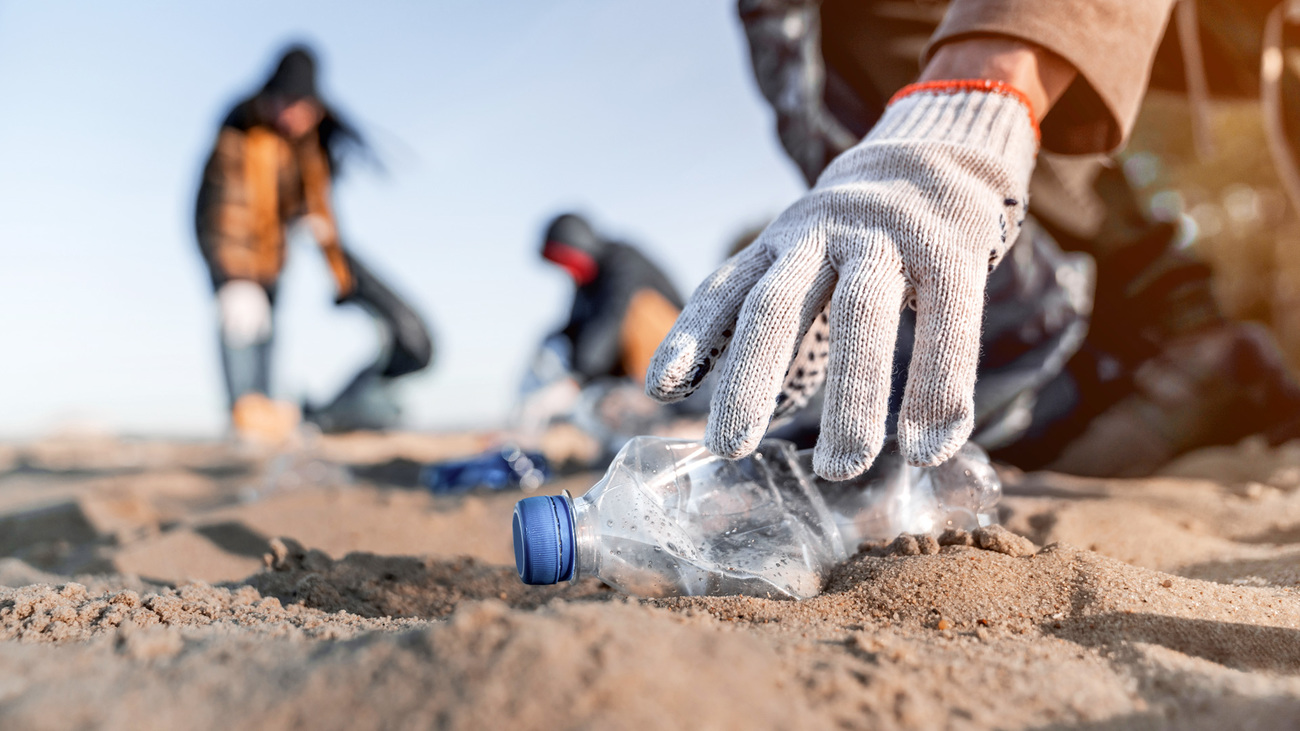Updates
How IFAW has helped animals and people during the Ukraine crisis
Learn moreHow does plastic get into the ocean?
One of our favorite parts of summer is heading to the beach and spending time in and near the ocean. From the sound of the waves crashing on the shore, to the feeling of riding or jumping those same waves, to the joyful and gleeful laughter of children frolicking in the foam, the ocean is one of our greatest sources of life on Earth. It provides more than half of the world’s oxygen and is home to millions of species that play critical roles in marine ecosystems.

That’s why it’s extra painful to think about the amount of plastic that ends up in the ocean annually—over one million tonnes each year. This plastic continues to threaten the health of ecosystems, marine animals, and humans.
Plastic also infects other parts of our environment. Of the 353 million tonnes of plastic waste generated every year, 82 million tonnes are mismanaged or littered, and the rest is recycled, landfilled, or incinerated. Only about 2% is effectively recycled. Of the 82 million, an estimated 19 million tonnes are leaked to the environment in some way. About six million of this ends up in rivers and along coasts.
Of the six million, it’s estimated that about 1.7 million tonnes of plastic end up in the ocean per year. This is 0.5% of all plastic waste. That percentage may seem small, but it’s a huge amount of waste that adds up over time. For comparison, it’s estimated that the Great Pyramid of Giza weighs about six million tonnes.
A plastic bag floating through the ocean looks a lot like a jellyfish—which just happens to be many sea turtles’ favourite food. Unfortunately, about 22% of sea turtles that ingest plastic die from it. Plastic can rupture their internal organs and cause internal blockages, preventing sea turtles from eating and digesting real food. They then die from starvation. It’s estimated that more than half of sea turtles in the world have ingested plastic at some point in their lives.
In a study of what type of ocean debris causes the highest number of mortalities among cetaceans (whales, dolphins, and porpoises), film-like plastic—which includes plastic bags—was number one. Like sea turtles, these animals often ingest plastic when mistaking it for food. In addition to internal injury and digestive problems, consuming plastic can hinder their swimming ability, making them more vulnerable to vessel strikes.
The EPA estimates that 380 billion plastic bags and wraps are used every year, requiring 12 million barrels of oil to create. Plastic bags generally cannot be recycled, so they are more likely to end up in the ocean.
The recent banning of most plastic bags from stores is a good step forward for protecting marine life, not just because they aren’t biodegradable but also because these bags are often ingested by sea turtles that mistake them for jellyfish. Despite the bag ban and all of our best efforts, plastic is still an enemy of the sea for animals and marine life. A whopping 90% of all seabirds have consumed plastic. Unfortunately, there’s no one major culprit to the plastic pollution problem.
Plastics get into the ocean in several ways:
Larger pieces of plastic, such as bags, six-pack rings, straws, bottles, ropes, and take-out containers, are called macroplastics. In addition to being an eyesore when they wash up on our beaches, macroplastics can pose a threat to wildlife through entanglement or consumption, when they’re mistaken for food. But the deadly dangers of plastic debris don’t stop there. When plastic breaks down into microplastics, it becomes a different kind of threat to wildlife. Microplastics, particles smaller than five millimeters in size, constitute over 90% of surface water marine plastics. Smaller fish, or those species low on the food chain like plankton and oysters, consume microplastics when filtering water. Microplastics and the toxins they contain get passed upwards through the food chain, eventually getting ingested by large marine animals and humans, particularly in rural, Indigenous, and low-income communities that rely on wild animals for consumption.
When ingested by small animals like birds and fish, microplastics can block the gastrointestinal (GI) tract and prevent these animals from digesting food. Microplastics have been known to cause a decline in feeding behaviour, lowered fertility, and slowed growth and development in some species.
Sadly, many of our toothpastes, body washes, scrubs, and other sanitary items still contain microbeads, a type of microplastic that’s added as an exfoliant to health and beauty products. Microbeads are now banned in the US, Canada, and the UK, with several other countries considering bans, but they’re still an ingredient in millions of items across the globe. Most water municipalities aren’t equipped to detect or remove these microbeads, so they end up passing through the treatment process and entering our waterways.
Beyond what we think of as typical plastic waste in the ocean, there is the issue of ghost gear—lost, abandoned, or discarded plastic fishing gear. It remains in the ocean, travelling on the currents and trapping everything in its path. Because this gear is no longer being monitored, it roams free, killing millions of marine animals as it drifts through the ocean, including critically endangered North Atlantic right whales. Ghost gear causes significant financial losses to fisheries as well as damage to boats.

IFAW is committed to solving the plastic pollution problem and addressing the harm it causes to individual animals and entire ecosystems. One way we do this is through coastal cleanup programmes, which help stave off larger plastics fragmenting into smaller pieces and spreading across the globe. It’s not unlikely for plastic originating in Newfoundland, Canada to make its way to shorelines in the UK, France, Ireland, Portugal, and Spain. Of course, there are things you can also do to help reduce the plastic pile-up, from simple to more intentional.
Here are some simple ways you can reduce your plastic use and keep plastic out of the ocean:
Once you try something new from this list, share it with your friends and family. It might not feel like you’re making a huge difference on your own, but if you can get your entire household or friend group to switch to reusable or plastic-free alternatives, you can help reduce the amount of plastic that ends up in our ocean and save animals.
You can also donate to IFAW to help us create a healthier ocean for animals, people, and the planet. Find out more about how you can get involved and take action for animals.
Updates
How IFAW has helped animals and people during the Ukraine crisis
Learn moreBlog
Discover the four layers of the forest—and the animals living in it
Read morePress releases
Global youth invited to illustrate the hidden world of plants and wildlife in the 2026 World Wildlife Day art contest
Read moreOur work can’t get done without you. Please give what you can to help animals thrive.
Unfortunately, the browser you use is outdated and does not allow you to display the site correctly. Please install any of the modern browsers, for example:
Google Chrome Firefox Safari